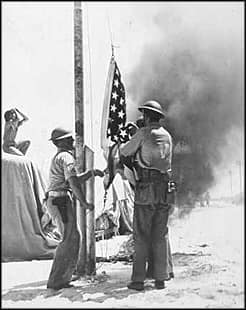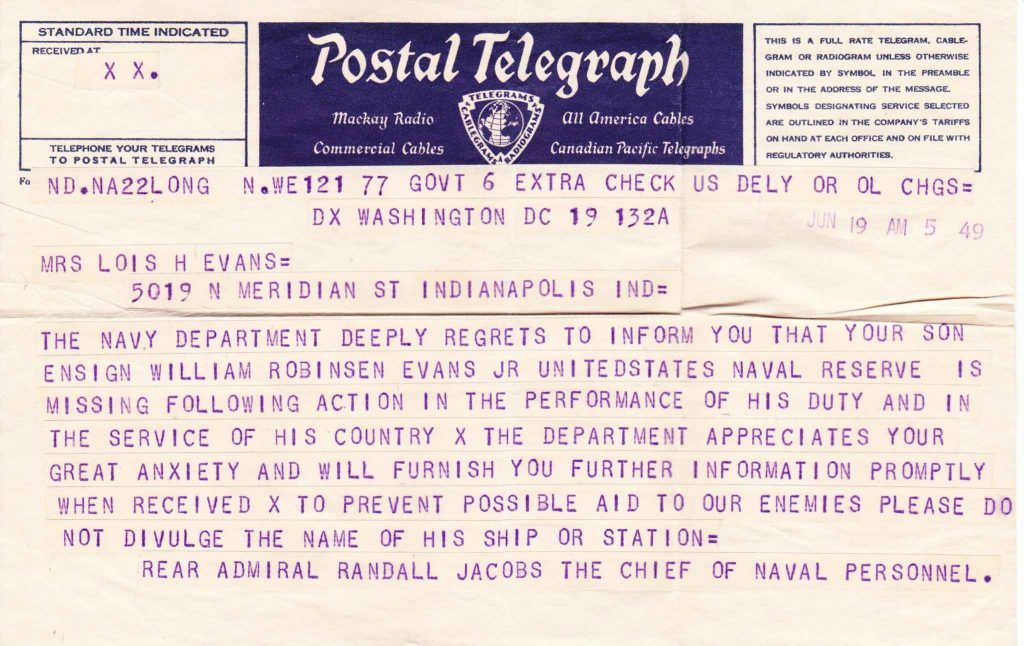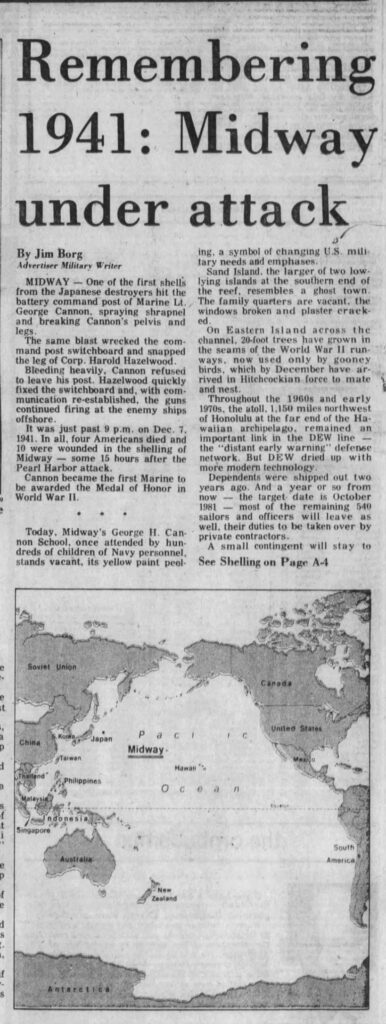The Battle of Midway, was a crucial naval battle in the Pacific Theater of World War II, occurred from June 4 to June 7, 1942. This battle, happened just six months after Japan’s attack on Pearl Harbor, on December 7, 1941, marked a significant turning point in the war, favoring the Allies.
The United States Navy, led by Admirals Chester Nimitz, Frank Jack Fletcher, and Raymond A. Spruance, effectively countered an assault by the Imperial Japanese Navy near Midway Atoll. The Japanese, under Admiral Isoroku Yamamoto, aimed to eliminate the U.S. as a strategic Pacific power, thus facilitating Japan’s establishment of its Greater East Asia Co-Prosperity Sphere. However, the U.S., having deciphered Japan’s naval ‘AF’ code, preempted the attack with an ambush.
The battle resulted in the loss of four Japanese aircraft carriers — Akagi, Kaga, Soryu, and Hiryu, a heavy blow to Japan’s naval strength.
During the Battle of Midway, the American aircraft carrier USS Yorktown (CV-5) suffered significant damage and eventual loss. The Yorktown was hit by Japanese aircraft-launched torpedoes and bombs on June 4, 1942. Despite efforts to save the ship, it was later struck by torpedoes from the Japanese submarine I-168 on June 6, which led to its sinking on June 7. The number of Americans killed on the USS Yorktown during the Battle of Midway was 141.
American Destroyer USS Hammann (DD-412) was assisting the damaged USS Yorktown when both were attacked by the Japanese submarine I-168 on June 6, 1942. The Hammann was struck by a torpedo and sank, resulting in the loss of 80 of her crew.
The U.S. suffered a total of 307 casualties, while the Japanese casualties were much higher, around 2,500.
The U.S. forces stationed on Midway Island suffered 15 killed in action, during The Battle of Midway.
During the Battle of Midway, Midway Atoll, consisting of Eastern Island and Sand Island, was subjected to heavy aerial bombardment by Japanese forces. The attack primarily targeted the facilities and infrastructure on the atoll that were crucial for its role as a U.S. military base in the Pacific.
The structures and facilities damaged on Midway Island included:
Runways and Aircraft Facilities: The runways and associated facilities on Eastern Island, where the U.S. had based its aircraft, were heavily targeted. Although they were damaged, they remained operational, allowing U.S. planes to continue taking off and landing during the battle.
Fuel Storage Tanks: The Japanese bombing runs aimed to destroy the fuel storage tanks on the islands, which were crucial for the operation of aircraft and naval vessels.
Barracks and Administrative Buildings: The living quarters for military personnel and various administrative buildings were also targeted in the attack.
Hangars and Repair Facilities: Aircraft hangars and repair facilities, essential for maintaining and equipping aircraft, sustained damage.
Anti-Aircraft Gun Positions: The Japanese sought to neutralize the island’s defenses by targeting anti-aircraft gun positions.
Despite these attacks, the damage to Midway’s infrastructure was not as crippling as the Japanese had hoped. The rapid repair work by U.S. personnel kept the base functional, allowing it to play a crucial role in the battle. The successful defense of Midway Island, combined with the decisive victory at sea, marked a significant turning point in the Pacific Theater of World War II.
The Midway Seaplane Hangar was 50% destroyed. The Midway Infirmary was also destroyed.
During this period, Japan was also active in other Pacific operations, including the invasion of Wake Island. Wake Island was attacked by the Japanese on December 8, 1941, just hours after the Pearl Harbor attack. Despite valiant defensive efforts, the island fell to the Japanese on December 23, 1941. In this invasion, 52 Americans were killed, and approximately 1,100 military personnel and civilians were captured. The captives endured harsh conditions for the duration of the war.
Other Japanese operations included the invasion of the Philippines, Malaya, Singapore, and the Dutch East Indies (now Indonesia), all of which fell to Japan by March 1942. Additionally, Japan was involved in conflicts in New Guinea and the Solomon Islands, including the Guadalcanal Campaign beginning in August 1942.
The Battle of Midway, coupled with the earlier events like the invasion of Wake Island, underscored the expansive nature of the Pacific War. Midway stands out as a critical moment when the balance began to shift from Japan to the Allies, paving the way for future Allied victories in the Pacific Theater of World War II.
Against All Odds – Video
Battle of Midway Information
Battle of Midway Photos
Miracle at Midway – Newspaper Article
The Battle of Midway Roundtable


John Ford’s -The Battle Of Midway 1945 Film
